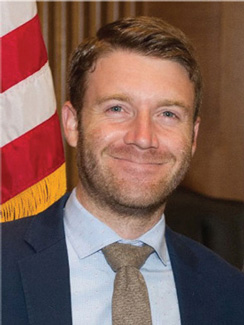Education, research wanted on antimicrobials
Two associations of universities and colleges want more education and research on antimicrobial resistance connected with agriculture.
A task force of the Association of American Veterinary Medical Colleges and the Association of Public and Land-grant Universities published a report Oct. 29, 2015, advocating those goals as well as increased collaboration and advocacy by the associations on the education and research goals. The task force members included representatives from the two parent organizations and from the agriculture and pharmaceutical industries, according to the report.
Dr. Lonnie King, a professor and former dean at The Ohio State University College of Veterinary Medicine and co-chair of the task force, said the recommendations are aimed mostly at colleges and universities. Those institutions, he said, can help federal agencies implement the National Action Plan for Combating Antibiotic-resistant Bacteria, which President Obama’s administration published in March 2015.


But the report also is intended for the federal agencies, whose officials could learn about the recommendations as well as the expertise and skills available from academic institutions, Dr. King said.
The AAVMC-APLU report, “Addressing antibiotic resistance,” states that antibiotic drug discovery has slowed while use has risen, and achievements in controlling infectious disease “could be reversed with catastrophic consequences.” And the speed and volume of international travel give microbes opportunities to share genetic material and spread.
The task force recommendations include developing a model antimicrobial resistance curriculum for animal science or health programs, training veterinarians and others working in agriculture, communicating with the public, improving understanding of how antimicrobial resistance develops and spreads, identifying alternatives to antimicrobials, promoting development of new antimicrobials, improving methods for metagenomic analysis and risk assessments, collaborating in diagnostic test development, and evaluating antimicrobial use and changes in use.
Education, outreach, and research are the three main mission areas for universities and colleges, Dr. King said, noting that the report carries another group of recommendations on how to meet the mission area goals.
“This report’s a little different in that it stresses the execution and the implementation of the other recommendations,” he said.
Dr. Chase Crawford, director of the Antimicrobial Resistance Initiative, which is trying to implement the report’s recommendations, said he has been working with government agencies, agriculture, and public health and consumer organizations to create a combined approach to antimicrobial resistance with representation from animal health and agriculture industries.
The initiative plans to participate in existing meetings, such as this past November’s antibiotics symposium by the National Institute for Animal Agriculture, as well as plan its own events, such as an antibiotics summit that Dr. Crawford expects will occur early this year.
“Right now, we are organizing a working group to look at developing the common baseline of knowledge around antibiotic resistance, so we’re putting together a working group of experts from universities that will take a look at how this issue is being relayed currently in universities, and in veterinary colleges specifically, and what the core competencies of a graduate should be relating to antibiotic resistance.”
He has heard anecdotes indicating to him that lessons in universities on antimicrobial resistance can vary, depending on the expertise and specializations of instructors.
“So, we are bringing together a diverse set of representatives from universities to try and come together and say what are the overall competencies, regardless of who teaches it, that schools and programs can look at to say ‘Are we covering those core competencies?’” he said.
The report also calls for creation of a national organization, to be named the University Research Organization, to coordinate research among universities and private companies.
“It would try to put together the best experts around the country to apply for grants so that you wouldn’t duplicate efforts, and you would bring the right experts to bear,” Dr. King said.
That would include selecting partners in business and government to work together on research and educational projects, he said.
Such an organization likely would be based at one university but established as a separate institution, he said, and he expects the funding eventually would come from grants or private organizations and industry.
Related JAVMA content:
Senators doubt FDA can control antimicrobial use (Feb. 15, 2015)
Academics lead group to advise government on antimicrobial resistance (Feb. 1, 2015)
Changes coming in antimicrobial use, availability (Jan. 1, 2015)
Administration wants more restraint over antimicrobial use (Nov. 15, 2014)